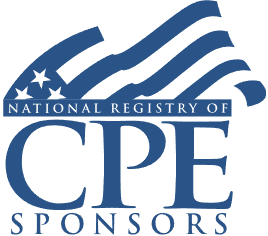State Depreciation Adjustments: Handling Conformity Issues
Tracking Depreciation, Section 179, and Bonus Depreciation Differences

Welcome! Strafford is now BARBRI! The expert courses you know from the trusted global leader in legal education.
Course Details
- smart_display Format
On-Demand
- signal_cellular_alt Difficulty Level
Intermediate
- work Practice Area
Corporate Tax
- event Date
Monday, December 9, 2024
- schedule Time
1:00 p.m. ET./10:00 a.m. PT
- timer Program Length
110 minutes
-
BARBRI is a NASBA CPE sponsor and this 110-minute webinar is accredited for 2.0 CPE credits.
This webinar will review state methods of depreciating and expensing assets. Our panel of state and local tax veterans will identify which states comply with federal provisions, including bonus depreciation and Section 179 expensing guidelines, outline which states do not and the alternative methods they employ, and provide suggestions for tracking these valuable discrepancies.
Faculty

Mr. Rendziperis provides state and local tax advice to companies in the financial services, private equity, real estate, technology, manufacturing, oil and gas, and service sectors. He has more than 15 years of experience advising clients on controversy, litigation, planning, implementation and compliance issues related to income and franchise tax, sales and use tax, excise and property taxes, unclaimed property, and tax incentives and credits.

Mr. Wood is a Managing Director in the State and Local Tax practice. He has over 26 years of experience advising clients on state and local tax issues. Mr. Wood has advised clients on state and local tax issues in the areas of income, franchise, sales, use, property, unclaimed property, and payroll tax. He serves clients in a variety of industries including retail/wholesale distribution, timber, high-tech, manufacturing, financial services, and telecommunications.
Description
Calculating and tracking depreciation differences for multistate businesses is an arduous but necessary task. States' treatment of depreciation, Section 179, and bonus depreciation vary significantly. These differences can amount to significant state tax savings when an asset is sold.
The Tax Act of 2017 offered 100 percent bonus depreciation from Sept. 27, 2017 to Dec. 31, 2022. This 100 percent rate has been reduced annually; the current rate is 60 percent (2024) and will be phased out totally in 2027. Thankfully, many states adopted the new rules; however, several significant states, including California, New York, and Texas, did not conform.
TCJA increased the Section 179 expensing deduction to $1 million and indexed the election for inflation. Similar to bonus depreciation, some states follow the federal guidelines while others do not. Some states apply a general limitation of $25,000 (i.e., D.C., Hawaii, Indiana), others require addbacks in differing percentages (i.e., Illinois, Minnesota, North Carolina), and still others did not adopt the Section 179 provisions or have their unique methods for calculating the allowed Section 179 deduction (i.e., Florida, Maine, Minnesota). Not maintaining comprehensive data on the depreciation taken by states can prove costly.
Listen as our panel of SALT experts points out significant state treatment of depreciation and offers advice for capturing state depreciation for state and local tax professionals.
Outline
- State depreciation differences: introduction
- Types of state adjustments
- State depreciation differences
- Bonus depreciation
- Section 179
- Tracking states' depreciation variances
- Examples
Benefits
The panel will cover these and other critical issues:
- Common methods states use for bonus depreciation
- Best methods for tracking depreciation by state for multistate businesses
- Examples of state addbacks and adjustments in specific states
NASBA Details
Learning Objectives
After completing this course, you will be able to:
- Identify types of depreciation adjustments used by specific states
- Determine which states allow and adjust the federal Section 179 expensing rules
- Decide how best to track depreciation variances for multistate companies
- Ascertain common federal and state differences in the treatment of bonus depreciation
- Field of Study: Taxes
- Level of Knowledge: Intermediate
- Advance Preparation: None
- Teaching Method: Seminar/Lecture
- Delivery Method: Group-Internet (via computer)
- Attendance Monitoring Method: Attendance is monitored electronically via a participant's PIN and through a series of attendance verification prompts displayed throughout the program
- Prerequisite: Three years+ business or public firm experience preparing complex tax forms and schedules, supervising other preparers or accountants. Specific knowledge and understanding of SALT taxation, nexus and apportionment as it applies to multi-state businesses.

Strafford Publications, Inc. is registered with the National Association of State Boards of Accountancy (NASBA) as a sponsor of continuing professional education on the National Registry of CPE Sponsors. State boards of Accountancy have final authority on the acceptance of individual courses for CPE Credits. Complaints regarding registered sponsons may be submitted to NASBA through its website: www.nasbaregistry.org.
Unlimited access to premium CLE courses:
- Annual access
- Available live and on-demand
- Best for attorneys and legal professionals
Unlimited access to premium CPE courses.:
- Annual access
- Available live and on-demand
- Best for CPAs and tax professionals
Unlimited access to premium CLE, CPE, Professional Skills and Practice-Ready courses.:
- Annual access
- Available live and on-demand
- Best for legal, accounting, and tax professionals
Unlimited access to Professional Skills and Practice-Ready courses:
- Annual access
- Available on-demand
- Best for new attorneys
Related Courses

Sales and Use Tax Issues for Construction Contractors
Thursday, October 23, 2025
1:00 p.m. ET./10:00 a.m. PT